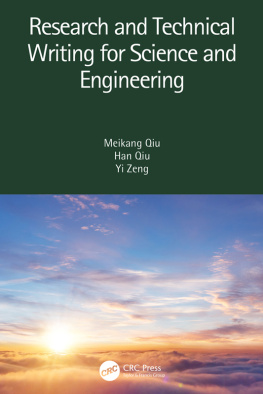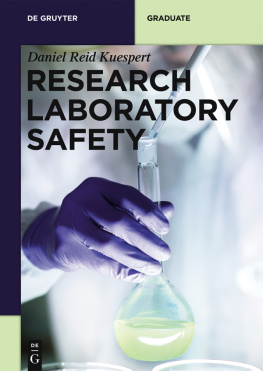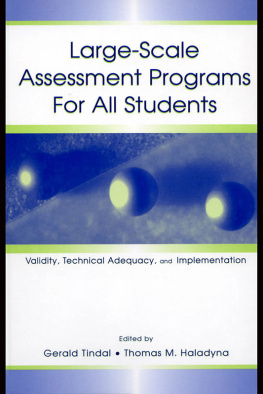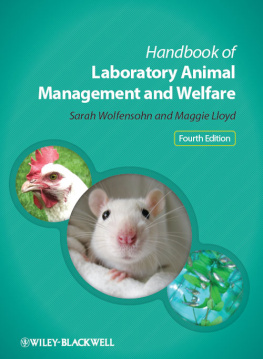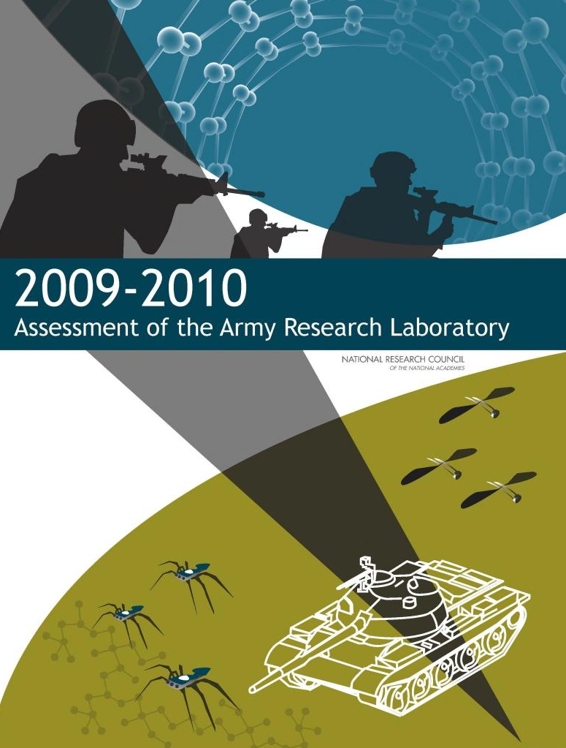THE NATIONAL ACADEMIES PRESS 500 Fifth Street, N.W. Washington, DC 20001
NOTICE: The project that is the subject of this report was approved by the Governing Board of the National Research Council, whose members are drawn from the councils of the National Academy of Sciences, the National Academy of Engineering, and the Institute of Medicine. The members of the authoring board responsible for the report were chosen for their special competences and with regard for appropriate balance.
This study was supported by Contract No. DAAD17-03-C-0017 between the National Academy of Sciences and the Army Research Laboratory. Any opinions, findings, conclusions, or recommendations expressed in this publication are those of the authors and do not necessarily reflect the views of the agency that provided support for the project.
International Standard Book Number-13: 978-0-309-21140-6 International Standard Book Number-10: 0-309-21140-9
Cover: Images courtesy of the Army Research Laboratory. Design by Liza Hamilton.
Copies of this report are available from
Laboratory Assessments Board Division on Engineering and Physical Sciences National Research Council 500 Fifth Street, N.W. Washington, DC 20001
Additional copies of this report are available from the National Academies Press, 500 Fifth Street, N.W., Lockbox 285, Washington, DC 20055; (800) 624-6242 or (202) 334-3313 (in the Washington metropolitan area); Internet, http://www.nap.edu.
Copyright 2011 by the National Academy of Sciences. All rights reserved.
Printed in the United States of America The National Academy of Sciences is a private, nonprofit, self-perpetuating society of distinguished scholars engaged in scientific and engineering research, dedicated to the furtherance of science and technology and to their use for the general welfare. Upon the authority of the charter granted to it by the Congress in 1863, the Academy has a mandate that requires it to advise the federal government on scientific and technical matters. Dr. Ralph J. Cicerone is president of the National Academy of Sciences.

The National Academy of Engineering was established in 1964, under the charter of the National Academy of Sciences, as a parallel organization of outstanding engineers. It is autonomous in its administration and in the selection of its members, sharing with the National Academy of Sciences the responsibility for advising the federal government. The National Academy of Engineering also sponsors engineering programs aimed at meeting national needs, encourages education and research, and recognizes the superior achievements of engineers. Dr. Charles M. Vest is president of the National Academy of Engineering.
The Institute of Medicine was established in 1970 by the National Academy of Sciences to secure the services of eminent members of appropriate professions in the examination of policy matters pertaining to the health of the public. The Institute acts under the responsibility given to the National Academy of Sciences by its congressional charter to be an adviser to the federal government and, upon its own initiative, to identify issues of medical care, research, and education. Dr. Harvey V. Fineberg is president of the Institute of Medicine.
The National Research Council was organized by the National Academy of Sciences in 1916 to associate the broad community of science and technology with the Academys purposes of furthering knowledge and advising the federal government. Functioning in accordance with general policies determined by the Academy, the Council has become the principal operating agency of both the National Academy of Sciences and the National Academy of Engineering in providing services to the government, the public, and the scientific and engineering communities. The Council is administered jointly by both Academies and the Institute of Medicine. Dr. Ralph J. Cicerone and Dr. Charles M. Vest are chair and vice chair, respectively, of the National Research Council.
www.national-academies.or g
ARMY RESEARCH LABORATORY TECHNICAL ASSESSMENT BOARD
LYLE H. SCHWARTZ, Air Force Office of Scientific Research (retired), Chair DONALD M. CHIARULLI, University of Pittsburgh DAVID E. CROW, Pratt & Whitney Aircraft Engine Company (retired) MARJORIE ERICKSON, Phoenix Engineering Associates, Inc. GEORGE T. GRAY III, Los Alamos National Laboratory PETER M. KOGGE, University of Notre Dame JEREMY M. WOLFE, Harvard Medical School
Staff
JAMES P. McGEE, Director ARUL MOZHI, Senior Program Officer LIZA HAMILTON, Administrative Coordinator ROSE NEUGROSCHEL, Research Associate EVA LABRE, Program Associate
v
Acknowledgment of Reviewer s
This report has been reviewed in draft form by individuals chosen for their diverse perspectives and technical expertise, in accordance with procedures approved by the National Research Councils Report Review Committee. The purpose of this independent review is to provide candid and critical comments that will assist the institution in making its published report as sound as possible and to ensure that the report meets institutional standards for objectivity, evidence, and responsiveness to the study charge. The review comments and draft manuscript remain confidential to protect the integrity of the deliberative process. We wish to thank the following individuals for their review of this report:
Deborah A. Boehm-Davis, George Mason University,
George E. Dieter, University of Maryland,
Michael Dunn, Ohio State University,
David Ferguson, Issaquah, Washington,
Douglas H. Harris, Anacapa Sciences, Inc.,
Jimmy K. Omura, San Francisco, California, and
Dwight C. Streit, University of California, Los Angeles.
Although the reviewers listed above have provided many constructive comments and suggestions, they were not asked to endorse the conclusions or recommendations, nor did they see the final draft of the report before its release. The review of this report was overseen by Alton D. Slay, Warrenton, Virginia. Appointed by the National Research Council, he was responsible for making certain that an independent examination of this report was carried out in accordance with institutional procedures and that all review comments were carefully considered. Responsibility for the final content of this report rests entirely with the authoring board and the institution.
vii
Contents
SUMMAR Y 1
1 INTRODUCTION 12 The Biennial Assessment Process, 12 Preparation and Organization of This Report, 13 Assessment Criteria, 14 Approach Taken During the Report Preparation, 15 Report Content, 16
2 COMPUTATIONAL AND INFORMATION SCIENCES DIRECTORATE 17 Introduction, 17 Changes Since the Previous Review, 18 Accomplishments and Advancements, 19 Opportunities and Challenges, 22 Overall Technical Quality of the Work, 28



